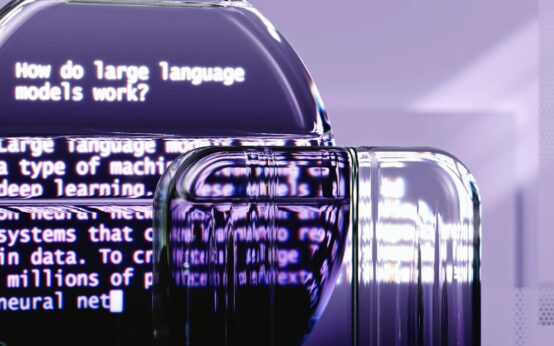The Future of Robotics: From Warehouses to Homes
Forget the clunky, slow-moving robots you’ve seen in old sci-fi movies. The reality of robotics is moving faster than most of us can comprehend. Right now, as you read this, an army of machines is working tirelessly behind the scenes, packing your online orders, assembling cars, and even assisting in surgery. They’re the invisible engine of our modern world. But this is just the beginning. The real story, the one that’s about to unfold, is how these machines are making the leap from contained, industrial spaces into our messy, unpredictable, and deeply personal lives. The future of robotics isn’t just about more efficient factories; it’s about fundamentally changing how we work, live, and connect with the world around us. It’s a journey from the sprawling warehouse floor directly to your front door.
Key Takeaways:
- Robotics has already revolutionized logistics and manufacturing with autonomous mobile robots (AMRs) and automated systems.
- The next wave involves collaborative robots, or ‘cobots,’ designed to work safely alongside humans in various industries, including healthcare and agriculture.
- Domestic robotics is expanding beyond simple cleaning tasks to include cooking, companionship, and elderly care.
- Significant technical, ethical, and economic challenges remain, including robot dexterity, decision-making AI, and the impact on the human workforce.
- The long-term future points toward a deep integration of AI and robotics, creating truly intelligent systems that can adapt and learn in complex human environments.
The Unseen Revolution: Robots in Today’s Warehouses
If you want a sneak peek into the future, look no further than the logistics hub of any major online retailer. It’s a ballet of mechanical precision. For years, the story of industrial robotics was dominated by giant, caged arms on an assembly line, performing the same powerful, repetitive task millions of time. That’s still happening, of course. But the real game-changer in recent years has been the robot that can move.
The Rise of the AGV and AMR
It started with Automated Guided Vehicles (AGVs). These are the workhorses that follow magnetic strips or predetermined paths on the floor, moving pallets of goods from point A to point B. They’re reliable, but a bit dumb. If something blocks their path, they just stop and wait. Think of them as a train on a very small track.
The real intelligence leap came with Autonomous Mobile Robots (AMRs). These are a whole different beast. Instead of fixed paths, AMRs use a suite of sensors—like LiDAR, cameras, and sophisticated software—to build a map of their environment. They can navigate dynamically, avoiding obstacles like a dropped box, a wandering human worker, or another robot. If their primary route is blocked, they don’t just stop; they calculate a new one. It’s the difference between following a line on the floor and using a GPS with live traffic updates. This adaptability has been absolutely transformative for e-commerce fulfillment, allowing warehouses to process an incredible volume of orders with speed and accuracy that would be impossible for a purely human workforce.

How Automation Solves the Logistics Puzzle
So what does this actually look like in practice? Imagine a ‘goods-to-person’ system. A human worker stands at a station, and instead of them walking miles of aisles to find products, AMRs bring the entire shelving unit—the ‘pod’—directly to them. The worker picks the item they need, and the robot zips the pod back into the massive, ever-shifting grid of inventory. It’s a complete reversal of the traditional workflow, and it boosts productivity by two or three times. It also dramatically reduces worker fatigue and the physical strain of walking on concrete floors all day.
This isn’t some far-off concept; it’s the standard operating procedure for companies like Amazon, Alibaba, and countless others. They simply couldn’t function at their current scale without this level of automation. The warehouse has become a living, breathing ecosystem of humans and machines working in a tightly choreographed partnership, a model that is now bleeding into other sectors.
Beyond the Assembly Line: The Evolving Workplace
The warehouse was the perfect training ground for mobile robotics. It’s a structured, indoor environment. But the technology is now graduating and finding jobs in far more complex and varied settings. The key to this expansion is a new design philosophy: robots that don’t replace humans but augment them.
Meet Your New Coworker: The Cobot
Say hello to the ‘cobot,’ or collaborative robot. Unlike their hulking industrial ancestors that had to be kept in safety cages, cobots are designed from the ground up to work in close proximity to people. They are equipped with advanced sensors that can detect a human’s presence, allowing them to slow down or stop completely upon contact to avoid injury. They’re often smaller, lighter, and much easier to program. You don’t need a Ph.D. in robotics to get a cobot arm to work; sometimes, you can just physically guide it through a motion, and it will learn and repeat the task.
This accessibility has opened the door for small and medium-sized businesses to adopt automation. A cobot can be tasked with tedious, ergonomically challenging jobs—like screwing in a thousand tiny bolts, precisely applying glue, or performing quality inspection checks—freeing up its human counterpart for more complex problem-solving and dextrous assembly tasks. It’s about creating a team where each member, human or machine, does what they do best.
Robotics in Unexpected Industries
The impact of this human-robot collaboration is being felt in fields you might not expect. In healthcare, surgical robots like the da Vinci system allow surgeons to perform minimally invasive procedures with incredible precision, leading to smaller incisions, less pain, and faster recovery times. In the lab, robotic arms handle and test thousands of biological samples, accelerating drug discovery. In agriculture, a new generation of ‘agribots’ is emerging. These machines can autonomously navigate fields, identify individual plants, and take targeted action—like zapping a weed with a laser or applying a micro-dose of fertilizer. This precision agriculture promises to increase crop yields while drastically reducing the use of water and chemical herbicides.
We’re even seeing robots in construction, laying bricks with perfect consistency, and in restaurants, flipping burgers or mixing cocktails. The common thread is the automation of tasks that are either repetitive, physically demanding, or require a level of precision that is difficult for humans to maintain over long periods.
The Final Frontier: Robots are Coming Home
For all the progress in industry, the ultimate goal for many roboticists has always been the home. This is, by far, the most difficult environment for a robot to master. Unlike a structured warehouse, a home is a chaotic, ever-changing landscape of people, pets, furniture, and clutter. A robot that can thrive here needs to be more than just a pre-programmed machine; it needs to be adaptable, safe, and socially aware.

More Than Just a Vacuum Cleaner
For most people, the ‘home robot’ is synonymous with the Roomba. And while robotic vacuums have become incredibly sophisticated, they represent just the first, tentative step into domestic automation. The next generation of home robots aims to tackle much more complex chores. We’re starting to see robotic lawnmowers, pool cleaners, and even window washers become more common. The kitchen is another major focus. Companies are developing fully robotic kitchen systems that can cook entire meals from scratch, following recipes with mechanical precision. Imagine selecting a meal from an app and coming home to a freshly cooked dinner.
“The biggest challenge in robotics is not making the robot do something, it’s making the robot do something in the unstructured and unpredictable world that we all live in.” – Marc Raibert, Founder of Boston Dynamics
The Promise of Personal and Companion Robots
Perhaps the most profound impact will come from robots designed not just to perform tasks, but to interact with us. Assistive robotics is a field with enormous potential, especially for aging populations. Imagine a robot that can help an elderly person get out of a chair, remind them to take their medication, fetch a glass of water, and facilitate video calls with family. This could be the key to allowing more people to live independently and safely in their own homes for longer.
Then there’s the idea of the companion robot. Machines like Jibo and Pepper were early attempts at creating social robots, and while they had limited success, they paved the way for more advanced systems. The goal isn’t to replace human interaction, but to supplement it, providing a source of engagement and comfort for those who might be lonely or isolated. As AI language models become more sophisticated, the ability of these robots to hold a meaningful conversation will grow exponentially.
The Hurdles We Still Need to Clear
This vision of a robotic future is exciting, but we aren’t there yet. There are immense technical and societal mountains to climb before robots become a seamless part of our daily lives. It’s not as simple as just building better hardware.
The Technical and Ethical Challenges
One of the biggest technical hurdles is dexterity. The human hand is a marvel of engineering, and replicating its ability to manipulate a vast range of objects—from a heavy box to a delicate egg—is incredibly difficult. Most robots still struggle with ‘soft-touch’ tasks. Another major challenge is ‘common sense’ reasoning. A robot can be programmed with millions of facts, but it struggles to understand unwritten social rules or make intuitive judgments in novel situations.
This leads directly to the ethical minefield. How do we program a self-driving car to make a choice in a no-win accident scenario? Who is liable when an autonomous surgical robot makes a mistake? How do we ensure that companion robots for the elderly don’t become a tool for surveillance or a poor substitute for genuine human care? These are not just technical questions; they are deep philosophical ones that we, as a society, need to answer.
Here are just a few of the key challenges to overcome:
- Battery Life and Power: Truly autonomous mobile robots need to operate for extended periods without being tethered to a power source.
- Cost: While prices are falling, sophisticated robots are still prohibitively expensive for the average consumer or small business.
- Safety and Reliability: A robot operating in a home or hospital must be fail-proof. A software bug can’t lead to a dangerous physical action.
- Data Privacy: Robots in our homes will be equipped with cameras and microphones, collecting vast amounts of personal data. Securing this data is paramount.

Navigating the Social and Economic Impact
And then there’s the question on everyone’s mind: will robots take our jobs? The honest answer is yes, and no. Automation will certainly displace workers in certain sectors, particularly those involving routine manual and cognitive tasks. History shows that technology always does this. But it also creates new jobs—robot maintenance technicians, AI ethics officers, automation integration specialists, and roles we can’t even imagine yet. The challenge is one of transition. It will require a massive societal investment in education and retraining to equip the workforce for the jobs of the future, not the jobs of the past.
Peeking into the Crystal Ball: The True Future of Robotics
So, where is all of this heading? What does the long-term future of robotics really look like? The answer lies in the fusion of two powerful technologies: advanced robotics (the body) and artificial intelligence (the brain).
The Convergence of AI and Embodied Intelligence
Today’s robots are mostly great at following instructions. The robots of tomorrow will be great at learning and adapting. The same breakthroughs in machine learning and large language models that are powering tools like ChatGPT will give robots the ability to understand natural language commands, learn new tasks simply by watching a human do them, and generalize their knowledge to new situations. This is what’s known as ’embodied AI.’ It’s about giving an AI a physical body so it can perceive, interact with, and learn from the real world, not just a dataset of text and images.
What a Fully Integrated Robotic Future Looks Like
In this future, a home robot won’t just follow a recipe; it will notice you’re low on milk and add it to the grocery list. It will see a spill on the floor and know to clean it up without being asked. Your cobot coworker won’t just perform a pre-programmed task; it will notice you’re struggling to lift a heavy part and come over to offer assistance. Robots will become less like tools and more like partners—proactive, intuitive, and truly helpful. The line between a physical device and a digital assistant will blur completely. Your smart home, your self-driving car, and your personal robot will all be part of a single, intelligent ecosystem designed to make your life safer, more productive, and more enjoyable.
Conclusion
The journey of robotics from the structured chaos of the warehouse to the intimate setting of the home is well underway. It’s a path filled with staggering innovation and complex challenges. We’ve moved beyond the stage of asking *if* robots will become a major part of our society; the only questions now are *how* and *when*. The transition won’t be a sudden sci-fi event, but a gradual integration, piece by piece, as the technology becomes more capable, more affordable, and more trustworthy. From the invisible robots that power our economy to the future companions that may one day care for our families, one thing is certain: our robotic future is being built today.
FAQ
What is the difference between a robot and a cobot?
The primary difference is their intended interaction with humans. A traditional industrial robot is designed for power and speed and typically operates within a safety cage to prevent human contact. A ‘cobot,’ or collaborative robot, is specifically designed to work safely alongside humans in a shared workspace. They have built-in safety features, like force-limit sensors, that allow them to slow down or stop if they make contact with a person.
Will robotics and AI eliminate most human jobs?
While automation will undoubtedly displace jobs that are repetitive and predictable, it’s unlikely to cause mass unemployment. Historically, technological revolutions have created more jobs than they have destroyed by creating new industries and new roles. The challenge will be in reskilling and educating the workforce to adapt to these new roles, such as robot maintenance, AI programming, and automation management.
How far away are we from having a ‘Rosie the Robot’ humanoid in our homes?
While we’ve seen incredible demonstrations from companies like Boston Dynamics and Tesla, a truly general-purpose humanoid robot that can perform a wide variety of domestic chores is still likely decades away from being a mainstream, affordable consumer product. The key challenges are not just in locomotion but in fine-motor manipulation (the ‘hand problem’), common-sense reasoning, and ensuring absolute safety in an unpredictable home environment.



 Holographic Technology: Sci-Fi to Reality & Future Uses
Holographic Technology: Sci-Fi to Reality & Future Uses  How Maglev Trains Work: The Floating Future of Travel
How Maglev Trains Work: The Floating Future of Travel  What Are Blockchain Oracles? A Simple Guide to Web3 Data
What Are Blockchain Oracles? A Simple Guide to Web3 Data  Software is Eating the World: A Deep Dive Analysis
Software is Eating the World: A Deep Dive Analysis  How Tech is Revolutionizing Disaster Response
How Tech is Revolutionizing Disaster Response  Geo-engineering Guide: Can We Really Hack the Planet?
Geo-engineering Guide: Can We Really Hack the Planet?  Social Media on Blockchain: The Next Digital Frontier
Social Media on Blockchain: The Next Digital Frontier  What is a Flash Loan? A DeFi Deep Dive for Beginners
What is a Flash Loan? A DeFi Deep Dive for Beginners  Crypto Swing vs Day Trading: Which Style Wins?
Crypto Swing vs Day Trading: Which Style Wins?  A Guide to NFT Generative Art Platforms (2024)
A Guide to NFT Generative Art Platforms (2024)  Crypto’s Carbon Footprint: The Real, Nuanced Story
Crypto’s Carbon Footprint: The Real, Nuanced Story  Join a Web3 Community: The Ultimate Networking Guide
Join a Web3 Community: The Ultimate Networking Guide